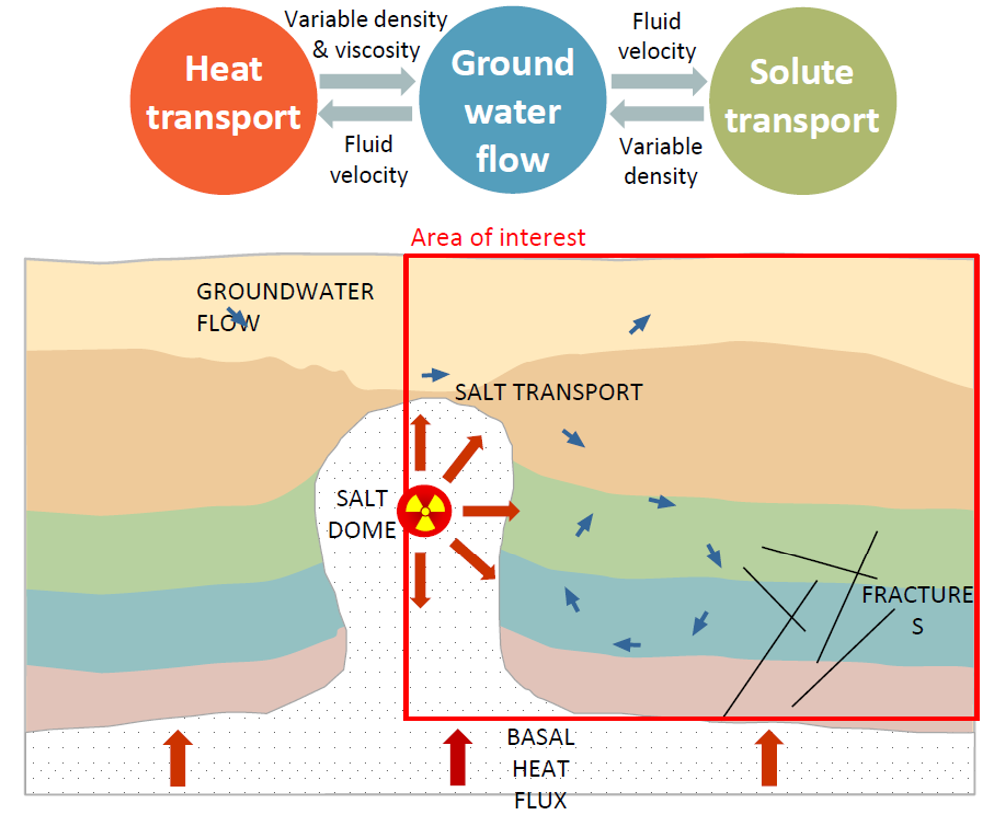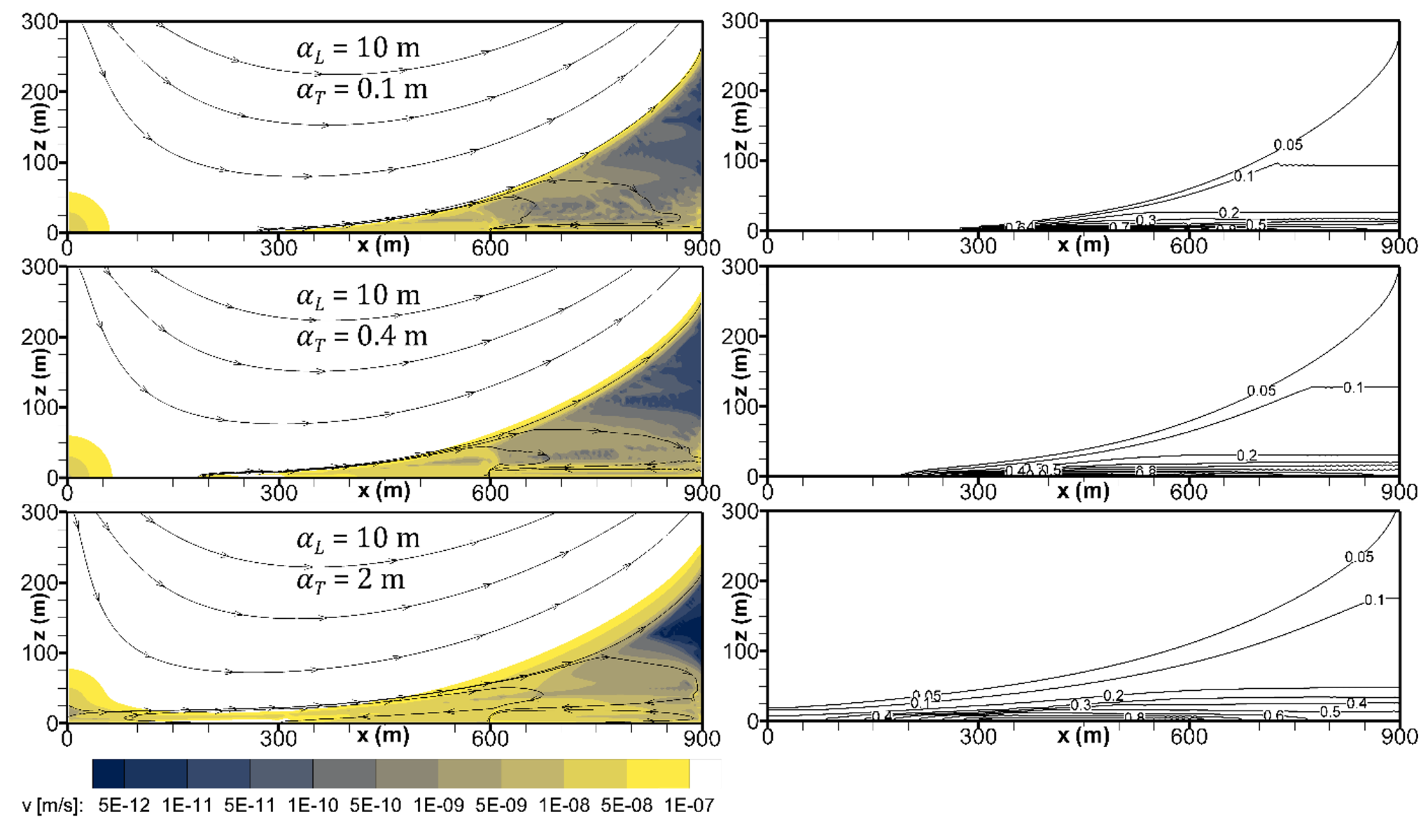¶ Coupled Flow and Transport Modeling
¶ Methodology
¶ Model 1: Density dependent flow above salt domes
This model is setup to investigate solute transport and predict potential migration of radionuclides through groundwater flow under density-dependent flow conditions. The area of interest is defined above the salt domes. Numerical simulations are performed using Finite Element Models (FEM) and software tools such as SALTFLOW. Key aspects of the model definition include:
- Governing Equations: Coupling of flow and mass transport equations for density-dependent flow.
- Closed basin model including topography driven flow.
- Transport Parameters: Investigation of diffusion coefficient, longitudinal and transverse dispersivity.

¶ Model 2: Thermohaline flow near salt domes
A large-scale model is setup to study the impact of thermohaline convection. This model includes the heat generated by the radioactive waste container in addition to the groundwater flow processes and solute transport. Numerical simulations are performed using Feflow (Diersch, 2014), a well-established commercial software. The following scenarios were investigated:
- Scenario 1: Model validation - a comparison study was setup considering only flow and solute transport against a case study from (Ranganathan and Hanor, 1988)
- Scenario 2: Thermohaline flow - model definition included heat transport in addition to flow and solute transport according to (Jamshidzadeh et al., 2015) and the impact of heat-dependent viscosity definition on salt transport was investigated.
- Scenario 3: Fractured salt chimney problem - a problem setup examining the effects different fracture networks on thermohaline flow.

¶ Results
¶ Model 1: Impact of diffusion coefficient and dispersivity
Simulations reveal significant impacts of transport parameters on the density-dependent flow system. Specific findings include:
- Dispersivity: Higher longitudinal dispersivity (αL) and transverse dispersivity (αT) lead to higher salt mass being transported into the domain and larger recirculation cells. Flow velocities increase with dispersivity along the lower boundary conditions.
- Diffusion Coefficient: Results show a minor effect of diffusion, as they are dominated by dispersion for diffusion coefficients up to 10-8 m²/s.

¶ Model 2: Thermohaline flow near salt domes
This section is currently work-in-progress.